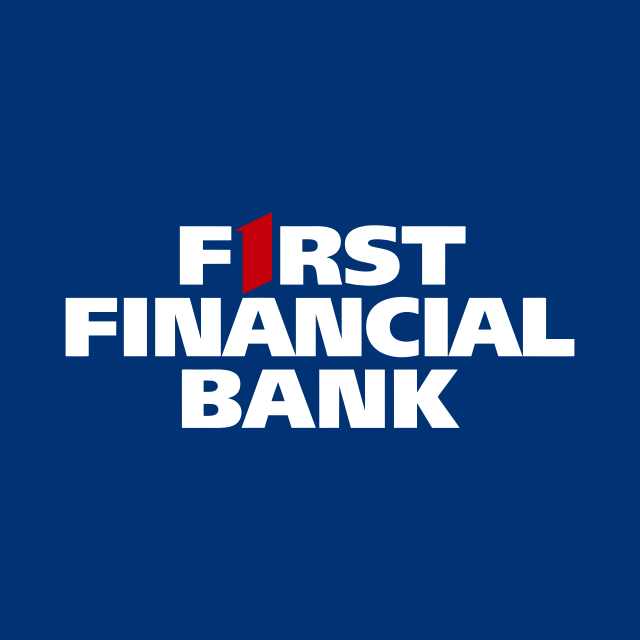Company Analysis First Financial Bankshares, Inc.
1. Summary
Advantages
- Dividends (2.2%) are higher than the sector average (2.18%).
- The stock's return over the last year (24.08%) is higher than the sector average (-24.09%).
- Current debt level 3.08% is below 100% and has decreased over 5 years from 4.62%.
- The company's current efficiency (ROE=13.27%) is higher than the sector average (ROE=5.61%)
Disadvantages
- Price (34.78 $) is higher than fair price (16.53 $)
Similar companies
2. Share price and performance
2.1. Share price
2.2. News
2.3. Market efficiency
| First Financial Bankshares, Inc. | Financials | Index | |
|---|---|---|---|
| 7 days | -3.5% | -8% | 3.1% |
| 90 days | -7.3% | -32.7% | 8.8% |
| 1 year | 24.1% | -24.1% | 30.1% |
FFIN vs Sector: First Financial Bankshares, Inc. has outperformed the "Financials" sector by 48.18% over the past year.
FFIN vs Market: First Financial Bankshares, Inc. has significantly underperformed the market by -6.06% over the past year.
Stable price: FFIN is not significantly more volatile than the rest of the market on "NASDAQ" over the last 3 months, with typical variations of +/- 5% per week.
Long period: FFIN with weekly volatility of 0.4631% over the past year.
3. Summary of the report
4. Fundamental Analysis
4.1. Stock price and price forecast
Above fair price: The current price (34.78 $) is higher than the fair price (16.53 $).
Price is higher than fair: The current price (34.78 $) is 52.5% higher than the fair price.
4.2. P/E
P/E vs Sector: The company's P/E (22.1) is lower than that of the sector as a whole (38.87).
P/E vs Market: The company's P/E (22.1) is lower than that of the market as a whole (49.05).
4.2.1 P/E Similar companies
4.3. P/BV
P/BV vs Sector: The company's P/BV (2.93) is higher than that of the sector as a whole (0.6466).
P/BV vs Market: The company's P/BV (2.93) is lower than that of the market as a whole (3.18).
4.3.1 P/BV Similar companies
4.4. P/S
P/S vs Sector: The company's P/S indicator (6.93) is higher than that of the sector as a whole (4.98).
P/S vs Market: The company's P/S indicator (6.93) is lower than that of the market as a whole (10.24).
4.4.1 P/S Similar companies
4.5. EV/Ebitda
EV/Ebitda vs Sector: The company's EV/Ebitda (17.53) is lower than that of the sector as a whole (40.82).
EV/Ebitda vs Market: The company's EV/Ebitda (17.53) is lower than that of the market as a whole (28.35).
5. Profitability
5.1. Profitability and revenue
5.2. Earnings per share - EPS
5.3. Past profitability Net Income
Yield Trend: Negative and has fallen by -0.2993% over the last 5 years.
Accelerating profitability: The return for the last year (0%) exceeds the average return for 5 years (-0.2993%).
Profitability vs Sector: The return for the last year (0%) exceeds the return for the sector (-15.99%).
5.4. ROE
ROE vs Sector: The company's ROE (13.27%) is higher than that of the sector as a whole (5.61%).
ROE vs Market: The company's ROE (13.27%) is higher than that of the market as a whole (10.67%).
5.5. ROA
ROA vs Sector: The company's ROA (1.52%) is lower than that of the sector as a whole (5.48%).
ROA vs Market: The company's ROA (1.52%) is lower than that of the market as a whole (6.44%).
5.6. ROIC
ROIC vs Sector: The company's ROIC (0%) is lower than that of the sector as a whole (5.05%).
ROIC vs Market: The company's ROIC (0%) is lower than that of the market as a whole (10.79%).
7. Dividends
7.1. Dividend yield vs Market
High yield: The dividend yield of the company 2.2% is higher than the average for the sector '2.18%.
7.2. Stability and increase in payments
Dividend stability: The company's dividend yield 2.2% has been steadily paid over the past 7 years, DSI=1.
Dividend growth: Company's dividend yield 2.2% has been growing over the last 5 years. Growth over 12 years.
7.3. Payout percentage
Dividend Coverage: Current payments from income (50.24%) are at a comfortable level.
8. Insider trades
8.1. Insider trading
Insider Buying Exceeds insider sales by 100% over the last 3 months.
8.2. Latest transactions
| Transaction date | Insider | Type | Price | Volume | Quantity |
|---|---|---|---|---|---|
| 23.05.2024 | Hickox Michelle S EVP/CFO |
Purchase | 29.7 | 29 700 | 1 000 |
| 02.05.2024 | Edwards Murray Hamilton Director |
Purchase | 30.28 | 9 841 | 325 |
| 25.04.2024 | TROTTER JOHNNY Director |
Purchase | 30.22 | 45 330 | 1 500 |
| 07.02.2024 | Roewe Randall Allen Chief Risk Officer |
Purchase | 29.7 | 10 692 | 360 |
| 14.12.2023 | McVey J. Kyle EVP, Chief Accounting Officer |
Purchase | 16.95 | 16 950 | 1 000 |
Pay for your subscription
More functionality and data for company and portfolio analysis is available by subscription




